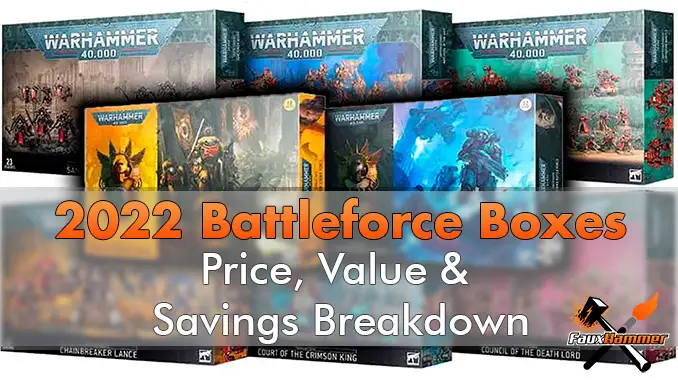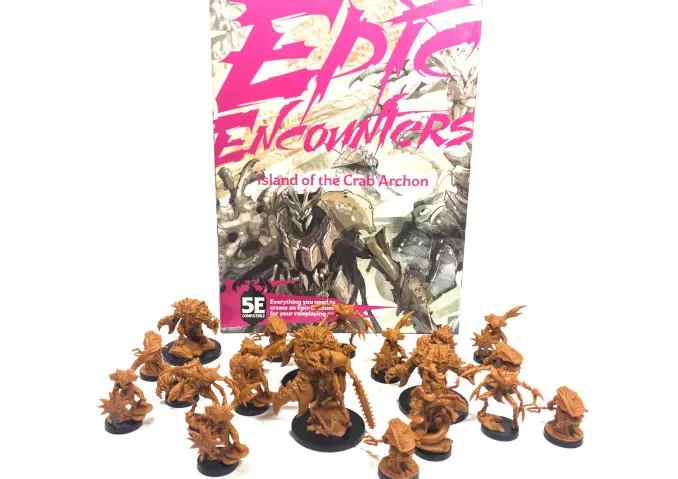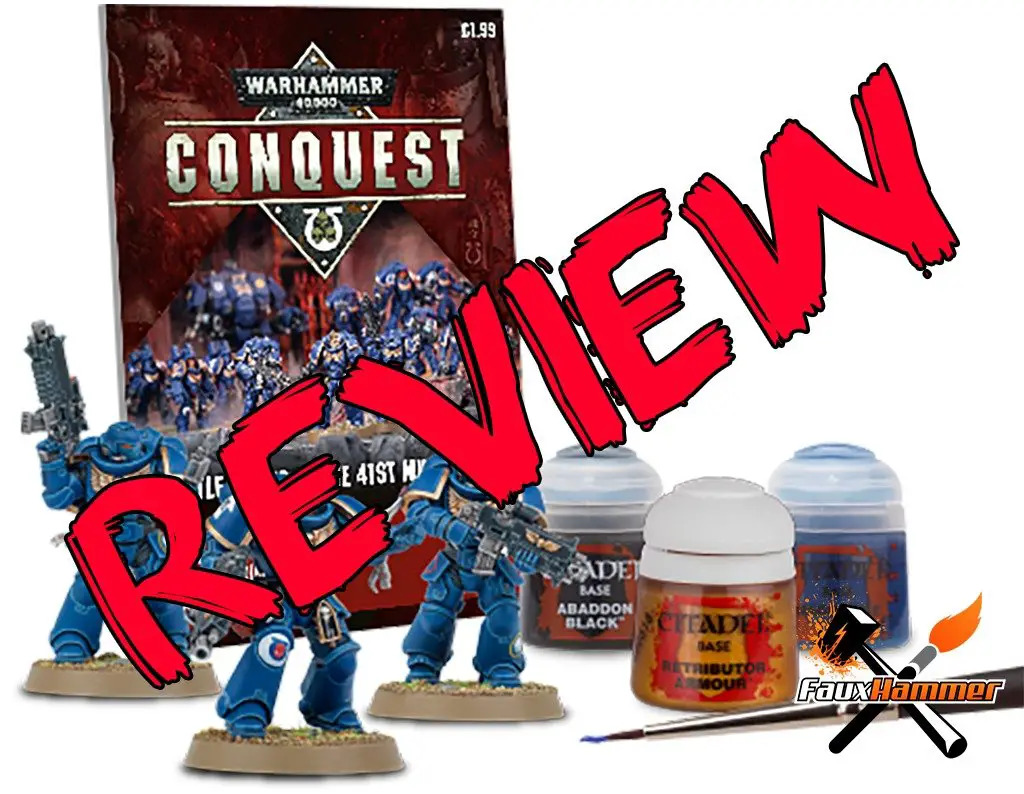Two Thin Coats Wave 2: Interviews with Duncan Rhodes and Peter Buxton
Take a behind-the-scenes look at one of the most successful hobby Kickstarters of recent years. Read about what else there is to come for the hugely popular Duncan Rhodes Two Thin Coats paints range as Trans Atlantis Games’ Wave 2 Kickstarter comes to its end – and hear directly from two people who’ve been involved since day one with our exclusive interviews!
Tenga en cuenta: This site uses affiliate links. Our Affiliate Partners are shown below
(Affiliate links will result in compensation to the site on qualifying purchases)
Haga clic en este enlace y compre sus cosas de hobby en Element Games para el Reino Unido y Europa para admitir FauxHammer.com - Use el código "FAUX2768"En la caja para obtener puntos de recompensa doble.
Nuestros afiliados / tiendas de hobby
- REINO UNIDO: Juegos de elementos, El puesto avanzado, Juegos Wayland, Lancer poderoso, Juego de duendes, Forbidden Planet, Suministros para escenarios de modelos, eBay, Amazonas
- EE. UU. / Canadá: MTechCave, GameKastle, eBay (EE. UU.), eBay (CA), Amazonas
- Alemania: Taschengelddieb
- Europa: eBay (DE), eBay (FR), eBay (ES), eBay (IT), Amazonas
- Australia: eBay, Amazonas
- Global: Juegos de RedGrass, Colores de guerra
- Impresoras 3D: Congelado 3D, Elegoo, Anycubic
FauxHammer - Último video en YouTube
Two Thin Coats Wave 2: Interviews with Duncan Rhodes and Peter Buxton – Introduction
Unless you’ve been living under a rock for the last few years (which, given the Covid-19 pandemic, you may well have been) you’ll have no doubt noticed that a new high-profile paint range has entered the hobby ring to duke it out with the best of them.
Trans Atlantis Games’ collaboration with legendary painter Duncan Rhodes has made some serious waves within the hobbyspace. Far from being just another paint range emblazoned with the well-known features of one of the miniature painting hobby’s superstars, The Duncan Rhodes Painting Academy Two Thin Coats paints are the real deal. When we did our review of Wave 1, we absolutely loved them, and I’ve found them creeping their way into my everyday painting rotation on more than once occasion. As someone who rarely ventures beyond their hobby comfort zone, consider that a ringing endorsement.
It came as absolutely no surprise to anyone, then, when a few months ago Trans Atlantis Games and DRPA announced that Wave 2 of the Two Thin Coats paints would be hitting Pedal de arranque. Another 60 paints for the range, including some gorgeous bright colours, more metallics, more washes, and some bran-new glaze paints!
But what’s else is in store for Duncan and the Trans Atlantis Games gang? Read our exclusive interviews to find out!
Two Thin Coats Wave 2: Interviews with Duncan Rhodes and Peter Buxton – The Story So Far
Since his departure from Taller de juegos at the end of 2019, the world has watched on eagerly to see what OG painting presented and, we suppose, first proper hobby “influencer” Duncan Rhodes would do next.
During his time as Taller de juegos’s posterboy, Duncan helped lay the foundations for the the online Warhammer Community as it is currently known. The powerhouse social media construct attracts hobbyists of all ages, experiences, and backgrounds to its every post on Facebook and Twitter. WarComTeam’s Twitch channel has also become the preferred platform from which Taller de juegos host their weekly painting hangouts as well as showcases of some of their favourite miniatures from the community from the previous few days – I myself have been lucky enough to be featured 12 times (I know that sounds like a brag, and it was).
Whilst Duncan left Taller de juegos before he got to see the seeds he had sown fully take root, his legacy with the company lives on. His painting videos remain their most-popular, most-watched, and the best they’ve ever done (in my opinion at least – though Nick Bayton’s guide on super easy plasma gun glow is up there). His moniker, to “always remember to thin your paints” and “apply two thin coats”, has transcended GW, however, and in his own words has “become a little bit of a meme that follows me around“. A meme, sure but poco?
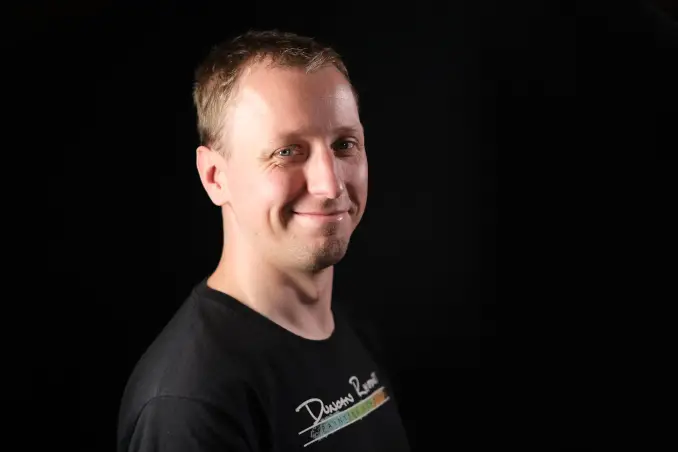
Duncan’s bit of timeless advice has become gospel to many painters around the world – and it also became the branding for the Two Thin Coats paint range.
The initial wave of Duncan Rhodes’ Two Thin Coats Paints were the result of almost 12 months of development. A combination of Duncan Rhodes and Roger Yates’ (Duncan’s Media Director and Producer from his GW days) combined encyclopaedic knowledge of all things miniature painting, as well as a fair splash of know-how from some of the best scientists in the painting industry, Two Thin Coats Paints are not some sort of side-hustle cash-grab: these paints mean business.
Their Wave 1 Kickstarter obliterated their $50,000 goal with a staggering $1,188,743 pledged by supporters. Wave 2, with a higher goal of $100,000, was similarly crushed (and continues to be crushed) and has currently raised a very reasonable $812,115 – over $2,000,000 raised between the pair.
The Two Thin Coats Kickstarter first launched in September 2021 – just as the world seemed to be coming to terms with the Covid-19 Pandemic. This, however, did not prevent various other historical world events (which we seem to have one of every Wednesday these days…) complicating things. To say that it has been a bit of a rollercoaster would be an understatement. But in spite of all the challenges they’ve faced, Duncan Rhodes and Trans Atlantis Games have thus far weathered every storm thrown at them.
But don’t just take my word for it.
Interview with Peter Buxton, Trans Atlantis Games Head of UK and EU Sales and Operations
It’s a Wednesday in February when I meet with Peter Buxton via Google Meets. According to his Instagram profile, he’s in charge of UK and EU Sales and Operations for Trans Atlantis Games – but, as I learn as our interview progresses, things aren’t quite that push-fit with what Peter does.
In truth, whilst Peter’s written responsibilities may be firmly rooted in sales, distribution and marketing, like just about every other member of Trans Atlantis Games, he’s a miniature painter and hobbyist at heart. This means he’s had a (very hands-on) involvement with the production of the Two Thin Coats paint range.
The first thing I ask Peter is to: “Tell me about himself and Trans Atlantis Games. Whilst everyone will have heard of Duncan Rhodes’ Painting Academy, who are you guys and where do you come into the Two Thin Coats tale?”
“Trans Atlantis Games are a company made up of what we refer to as Industry Veterans”, Peter says. “Not because of our experience, but because we’re all old”.
Peter eventually concedes that this isn’t enteramente true. At their core, Trans Atlantis Games are a group of like-minded individuals who have been working together on-and-off for close to 20 years. However, between them they bring some serious know-how and experience to the table.
Back in 2019, however, Trans Atlantis Games frontman and actual living legend Bob Watts decided he wanted to do something new. Whilst still running the show at Privateer Press, Bob contacted Duncan and Roger shortly after whispers began emerging that Duncan was forming his Painting Academy about working together and, shortly afterwards the idea of creating a paint range began to emerge.
But Trans Atlantis Games wanted to do things a bit differently. Instead of formulating a range of paints and just sticking Duncan’s face on it in the hope his YouTube-ready visage would help them shift a few more bottles, Trans Atlantis offered Duncan complete creative control. When you pick up a bottle of Two Thin Coats paints, you are picking up an a container of Duncan’s expertise, skill, and knowledge. This is exactly what Trans Atlantis Games wanted.
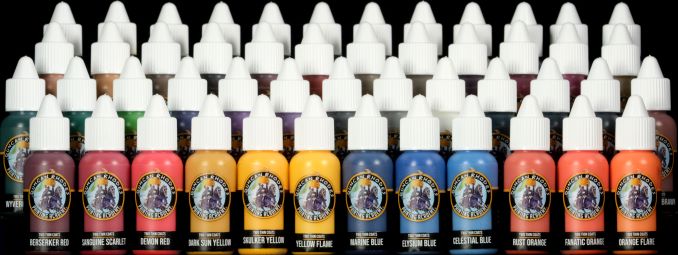
“It feels like it’s only been a minute since the Two Thin Coats Wave 1 Kickstarter was announced, and we’re already talking about Wave 2. But let’s turn back the clock a bit: Trans Atlantis are a fairly new company in the international; hobbyspace and have very much hit the ground running. What else might you be known for, and why start your story with paints?”
“Not much, to tell you the truth,” Peter says with a modest shrug. “Trans Atlantis Games are a very new company, and the Two Thin Coats paints are our first real project.”
The likelihood is, as Peter explains, is that whilst you may not necessarily know Trans Atlantis Games, you will have heard of their CEO Bob Watts – and if you haven’t heard of him, you will have heard of some of the games that he has touched during his years of working in the gaming industry. Warhammer? Dungeons and Dragons? Yeah.
Peter himself admits he “jumped around a bit more”. Peter’s own experience comes from running painting studios, owning shops, and run events for Privateer Press. Ultimately, what Perter proves as he talks up the qualifications of his colleagues and modestly brushes over his own is that the choice to make paints as Trans Atlantis Games’ first big venture was a common sense decision. There was a vast amount of shared knowledge in this area within the company, so it just made sense.
“We’re pretty sure we know why, but we want to hear you say it. Why Duncan?”
Peter laughs. “Why no Ducan?” he says. “He is the Bob Ross of miniature painting!”
Duncan was the obvious choice from Trans Atlantis for more reasons that simply who he is. “Duncan is the best teacher,” Peter tells me (something I myself had a sense of from following Duncan’s painting guides when I first got back into the hobby four years ago). “He doesn’t take you down any rabbit holes, and his entire approach is focused on obtaining good quality quickly and easily.”
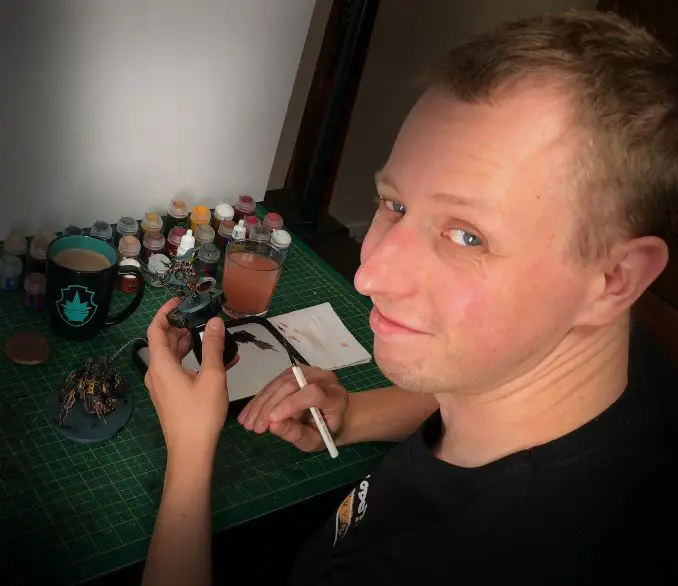
More importantly, Duncan’s core values – which revolve around making painting accessible to everyone – align very closely with what Trans Atlantis Games wanted to achieve with their own paint range. His whole ethos is about painting to a good, tabletop-ready standard with a few brushes.
“He is also exactly like he is in his videos,” Peter informs me. Two months later, I’d be able to corroborate this. Duncan is, indeed, the nicest man on the planet.
When you originally sat down to start thinking about what paints to include in TTC Wave 1, what did you want to ensure was included in the range? Any particular colours?
Wave 1, Peter tells me, was all about the basics. “Initially, we were presented with 48 colours, but this was too limiting”, Peter says.
Apparently, Duncan couldn’t get close to a ‘complete’ set as he would have liked, so Trans Atlantis, led by Duncan, added a further 12 paints to the range and settled on 60 paints for Wave 1. 60, Peter says, allows for “a range that would allow you to paint 80% of the figures out there, irrespective of what franchise they are a part of.”
Trans Atlantis wants to ensure they covered as many themes and systems as possible to maximise the appeal of their paint. Be it historical, sci-fi, or fantasy, Trans Atlantis Games wanted to be certain that the paints in their range would appeal to you no matter what setting you enjoy. At its core, though, Wave 1 needed to be a watertight range of primary and secondary colours, as well as some neutrals in order to cast the net wide enough and catch as many unpainted miniatures as they can.
The washes were a must-have, too, so Peter says. Washes have become such a huge part of how people paint over the last few years since they’ve become commercially available that the range couldn’t no contain them. The Two Thin Coats range’s washes were subject to the same level of scrutiny as the rest of the paints in the range. Various strengths of washes were tested, and Duncan and Trans Atlantis Games eventually settled on a formula they felt did exactly what they wanted it to.
TTC is largely based around painting “triads” that are designed to make highlighting and adding colour to texture easy. This sort of painting system has been around for a while in various forms – why is yours different?
“That’s the beauty of it,” Peter says with a smile. “It’s not different. It’s a simple, easy to explain way of painting that makes sense to someone who has never painted before.”
The painting triads are built around applying a base – or “shadow” – colour, then a wash, then reapplication of the shadow colour, then a mid-tone, and finally a highlight.
“Once you’re more experienced,” Peter says, “you can use the range to start experimenting and building your own triads to expand your painting.”
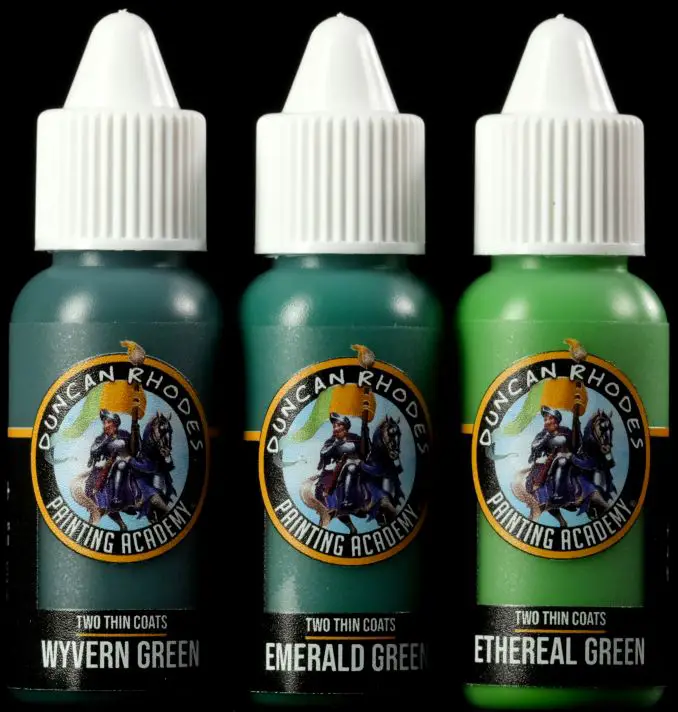
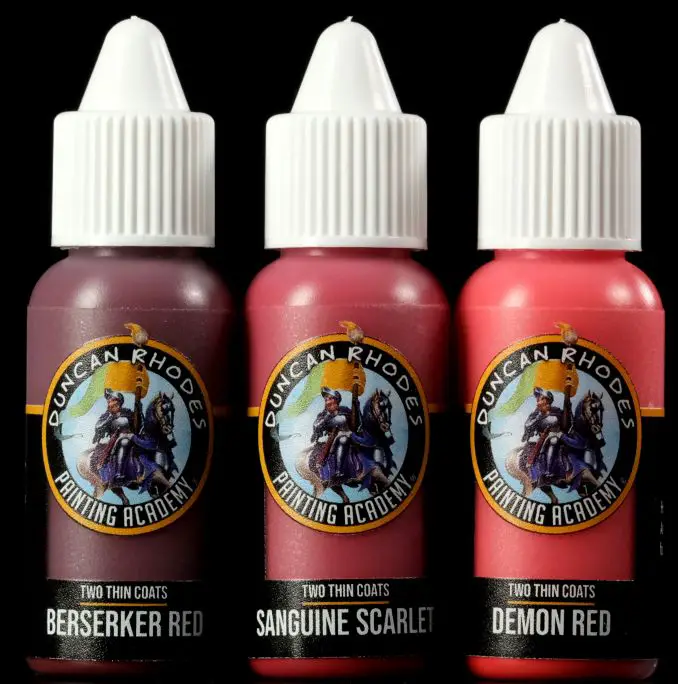
Halfway through this conversation, I make the mistake of bringing up yellow paint. We moan about all the terrible yellow paints we’ve used whilst painting until Peter promises me TTC’s yellows are the best he’s ever used. I realise that during our review of TTC Wave 1, the yellow was a colour I actually missed (there isn’t much yellow on a Dark Angel after all). I promise to rectify this, and immortalise it here in this interview in order to hold myself accountable.
“So, you’ve got your international superstar paint-celeb. You’ve got an idea as to what will feature in your initial range of colours. You need to launch your campaign. Why Kickstarter?”
“We chose Kickstarter because, well, we needed to kickstart the company,” Peter says with a laugh – but the real answer is a little bit more complicated than that.
Again, much like the decision to have paints as their first project, the decision to use Kickstarter was again prompted by the group’s shared knowledge. It was thanks to Peter’s colleague, Andy, who has managed projects via Kickstarter before, that Kickstarter was eventually settled upon as their platform of choice.
“Did you expect the response you got to your initial Kickstarter? Did it meet fall short of, meet, or exceed your expectations?”
Peter looks side-screen for a moment as he searches for the right words. “It…completely blew our expectations away,” he says after a moment with a shrug. Peter says how a few days before release that he and his colleagues had sat in a meeting, throwing around figures. They were hoping for a couple of tens of thousands, maybe a few hundred at a real push. Modest as ever, Peter says how smashing a million was well beyond their wildest dreams – and yet, they did it.
“So, Kickstarter underway, pledges pouring in, it’s time to start delivering on promises. Many of the people reading this will have absolutely no idea how paints are made. Can you provide a run-down of the physical process that takes a heap of raw ingredients and chemicals and turns them into an acrylic that can safely be used on miniatures?”
“Originally,” Peter begins, “we were going to get the product manufactured elsewhere and then delivered to us. Trans Atlantis would then be in charge of the assembly, distribution, and other parts of selling the product.”
This plan changed for two reasons: the first was Covid, which devastated production lines and supply chains across the globe. The second was the simply unprecedented level of success enjoyed by the Kickstarter. “Asking a company to make you 50,000 bottles of paint is very different to asking for a million bottles!”
Mid-Kickstarter, Trans Atlantis had to come up with a new plan – and that plan was to do the entire thing themselves.
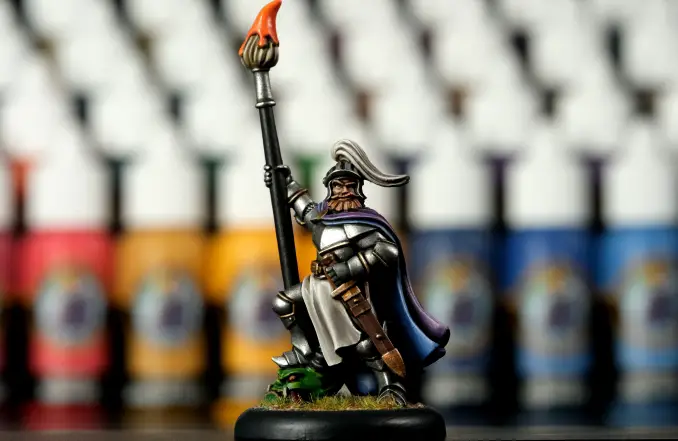
Trans Atlantis Games have, from the ground up, built their own paint production plant. A mammoth undertaking that the company decided to settle on so as not to compromise the integrity or quality of their product, Trans Atlantis had to build a team from scratch, as well as source, create, and learn how to use an entire factory’s worth of equipment all by themselves – all to meet the extraordinary demands of their Kickstarter.
That they managed to do so and yet still produce such a high-quality product speaks volumes about the sheer skill and talent on offer at Trans Atlantis Games. Peter reflects on how his friends often ask him how his job making games is. “They’re usually quite surprised when they hear that he runs a painting plant instead!” Peter muses.
…And all that before anyone could sit down and actually make any paints.
Peter explains the rigorous process the folks at Trans Atlantis went through with Duncan in order to get the paints exactly right. First, they presented the scientists they were working alongside with a list of qualities they wanted the paints they want the paints to have. This would be taken away, worked upon, and eventually the scientists would send back a number of black and white paint samples to be tested.
Once they found the right consistency, that base – or “medium” – was chosen to be used for all paints. It’s why you’ll notice the Two Thin Coats range is so consistent in flow, coverage, and overall performance.
Finally, Trans Atlantis, still with Duncan at their head, would tweak each individual paint, commenting on how each individual colour actually looked. Were the blues blue enough? Were the metallic paints shiny enough? Were the washes, er, washy enough?
“This last part of the process was seriously complicated by the Covid-19 Pandemic,” Peter says. He recounts of how he, Duncan, Roger and their other colleagues would have to sit in a room together, socially distanced, and test the paints, sliding miniatures across tables to each other or standing up and moving around the room in order to allow everyone else to move around and look at each other’s work.
“Painting is an extremely subjective experience. Everyone likes to paint a little bit differently, from edge highlighting to layering, blending and drybrushing. When creating TTC paints – both in Wave 1 and Wave 2 – what did you do to ensure your paints were as versatile and user-friendly as possible?”
“Primarily, we wanted everything to suit the way Duncan teaches how to paint first,” Peter says. “The way Duncan paints is very representative of the way a lot of people paint, so wanted to ensure it suited Duncan’s way of doing stuff first.”
Peter was instrumental to this part of the process. A fan of airbrushing and using more advanced techniques, Peter contribution to the formulation process cannot be understated. A fan of airbrushing, wet blending, and two-brush blends (something he had to explain to me as I’d legitimately never heard of it before), Peter was able to work alongside Duncan and provide alternate perspective.
But during the process of comparing notes and trying out paints, Peter was surprised to find that what he and Duncan were doing to paint their miniatures was essentially the same. “We ultimately painted the same way but via different techniques,” Peter says.
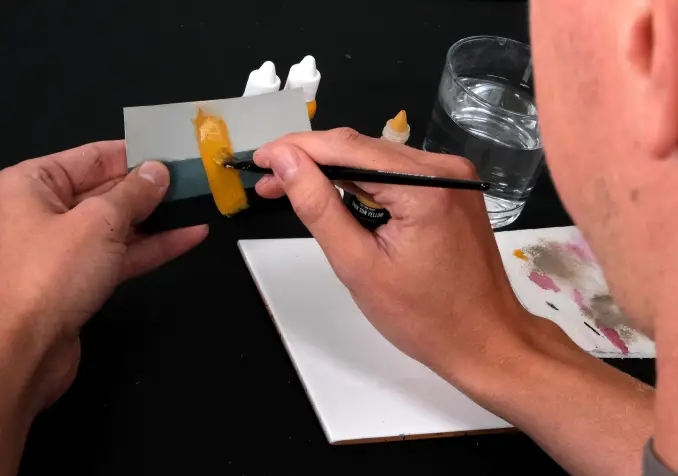
“Keeping that in mind,” I ask, “how, if at all, does this affect the process of actually producing the paints?”
“The basic answer is that we didn’t deliberately design paints to do certain things, for example, airbrushing,” Peter says. “Instead, we took a holistic approach to the paints. We wanted to make a paint that we wanted to use – and subconsciously sought out properties that would allow us to paint the ways we wanted to.” He smirks. “We sound like the paint whisperers here!”
But Peter’s point is valid – and taken in conjunction with what he has said so far, makes perfect sense. The Two Thin Coats range is created by an experienced group of painters all of whom paint a certain way. Whilst ultimately Duncan has had the final say on all elements of it, its clear that everyone has left their mark – and, as a result, the range supports a diverse ways of painting
“Wave 1 has been out for a while and has passed across the hobby desks of everyone from the completely novice to some of the finest painters in the world. How has the feedback been?”
“Feedback has been overwhelmingly positive,” Peter says with a proud smile. “We’ve been very happy with the feedback we’ve got. The biggest surprise, however, has been all the testimony we’ve received from people saying our paints are making them not only enjoy their hobby more, but that their skills are visibly improving.”
Peter says it’s the highest form of compliment they can receive, hearing that their hard work on their paints is having such an effect on how they work.
“It hasn’t been all that long since TTC Wave 1 dropped – be honest: when did you decide Wave 2 was definitely going to be a thing?”
“Pretty much the day after Wave 1 finished on Kickstarter!” Peter tells me. “As bad as it sounds, given where we were in the development cycle at the time, we knew we wanted to make Wave 2 straight away.”
“There were also a lot of colours on the cutting room floor,” Peter continues. “So, it was quite easy to find inspiration for the new range – and we knew that people would be asking for certain paints so they had something to aim for. I had figures I wanted to paint with our paints, and we didn’t have colours for them yet!”
Peter tells me how the red triad in Wave 2 was originally going to be the first red triad in Wave 1, but it was decided the colours were too dark for the first-out-of-the-door red paint. This one, for example, will be making its appearance in Wave 2.
“What were your biggest takeaways from Wave 1? Did everything go exactly as planned, or were there any bumps in the road you want to try and avoid this time around?” As I ask the question, I know the first word that will leave Peter’s mouth.
“Covid.”
Yup.
“The world is a very different place now,” Peter says. The initial Kickstarter was put in jeopardy due to the unseen and totally unknowable challenges that the Covid-19 placed on supply lines. “However, we think we’ve got over shipping issues now!” Peter assures me.
Henceforth, Trans Atlantis Games will be using single shipper, and their manufacturing issues have been stabilised both by the creation of their own painting plant and as supply chains have become more robust post-pandemic.
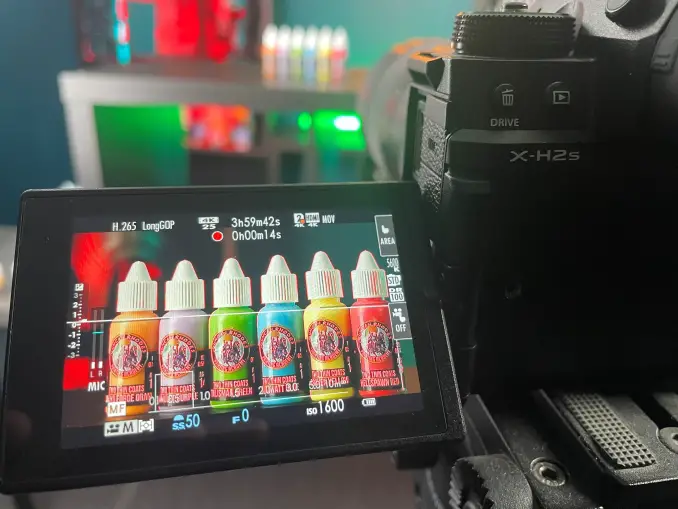
Also, this time around with the Kickstarter, Peter says Trans Atlantis have “been very specific about what wee want. For example, we have very structured stretch goals this time around, having learned from last time when we only prepared for stretch goals up to $4,000!”
“Here at FauxHammer.com, we were huge fans of TTC Wave 1. When can we and the rest of the general public expect to get our hands on Wave 2?”
“August 2023 for Kickstarter backers. Retail shortly after. Advantage is, we now have retail distribution network in place – another thing we also had to build from scratch!”
I’m getting the sense a lot of hard work has gone into the Two Thin Coats paints – far more than anyone really appreciates.
“Between now and then, what can we expect to see from you in terms of TTC Wave 2 promotional content? Any competitions, new painting tutorials, or anything else to keep the hype up?”
“If I get time, yes!” Peter laughs. “For one, we’re going to be at more shows, such as Salute in London. We’re also planning on doing tutorials and paint guides using the new paints with their partners – but I can’t say too much, we’re in the funny stage of talking to people where nothing has quite yet been formally agreed.”
But there are plenty of things are in the works, so watch this space. There will, of course, be more videos on Duncan’s Painting Academy and YouTube, and the range will be launching at retail in the US sometime this Spring.
“Dare I ask: will we be seeing a wave Wave 3?”
Peter grins. “Watch this space,” he says.
“Aside from further work with Duncan, what other projects can we expect to see from Trans Atlantis Games over the next few years?”
“Well, the plan was for the paints to be a little project to get the company off its feet – but now look at it!” Peter says. Whilst the Two Thin Coats paints range has taken up a vast amount of their time, Peter tells me to “watch out for games, more hobby products and some roleplaying supplements.”
I most certainly will.
Peter’s passion for his work is evident throughout the interview. This is a man who lives and breathes his hobby, and the dedication he has to his role at Trans Atlantis Games, as well as his encyclopaedic knowledge of everything hobby-related shines through in everything he says. People like Peter help the hobby world go round: often unsung heroes who make sure we have exactly what we need when we need it, all so we can play with our little plastic figurines better!
Interview with Duncan Rhodes
It took a few months before Duncan was available for an interview. Peter very kindly pulled a few stings and pointed us in the right direction, and a few dropped names later, in early April 2023, I find myself sitting at my desk, staring into the void of an empty Google Meets room, waiting for one of (if not los) most influential and well-known hobbyist(s) of all time to have a chat with me. If, in early 2020, as I YouTubed “how to paint Stormcast Eternals” and watched my first Duncan video, you’d told me I was about to do this, I think I’d have had a panic attack.
For a man as busy as Duncan, he’s bang on time. I’ve only managed to carve out an hour of Duncan’s valuable time for myself, so after a few quick introductions we kick off.
Everyone who reads this interview will know who you are. But, in your own words, who are you and what do you do?
“I am Duncan Rhodes and I – somehow – for a living teach people how to paint miniatures.” Duncan explains how he’s all about helping people get paint onto their figures – he’s not concerned with “high-end competition stuff”, as he calls it. It’s more direct, about being able to get “good, solid results” easily.
Duncan attributes his career largely to luck – “Being in the right place at the right time”, he says – though I’m sure that there are plenty of readers who will disagree with Duncan’s humble assessment of his skills.
There are a couple of other people who work with you over at the Painting Academy – chief amongst which is Roger Yates. Can you tell us a bit about Roger and what he does with you?
Duncan smiles at the mention of Roger. “Roger is fundamental to everything I’ve ended up doing in my weird career over the last – oh boy, ten years now, has it been?” Duncan says. “When I joined Warhammer TV, Roger was one of two members of staff working there. He was the video editor and he was the one pushing for creating painting tutorials.”
Duncan describes his meeting with Roger as being “by chance” when they ended up working together on the same project which was a DVD describing a then-recently-refreshed Citadel paint range.
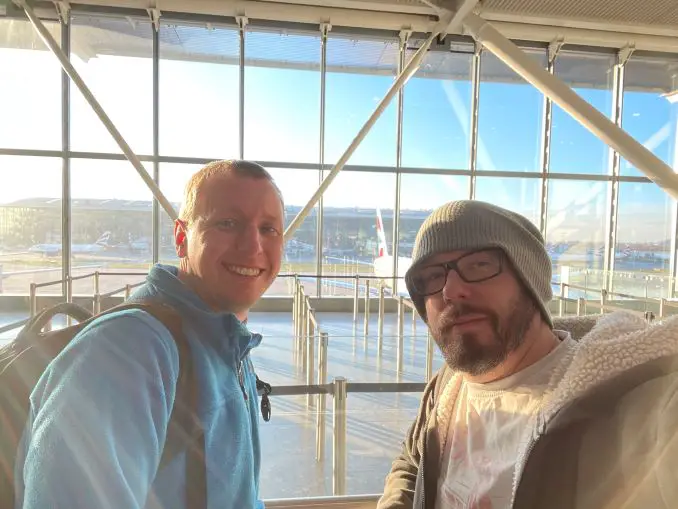
“The two of us just hit it off,” Duncan says. “The two of us had similar ideas of what to do with [these videos]. My focus has always been on helping people to paint stuff, and Roger felt that Warhammer TV’s videos could also be used to help people to paint stuff.”
Their first true test together came when Roger set up an experiment to see just how popular painting tutorials may be, and asked Duncan to be the guinea pig. We all know how this story ends: with Duncan taking his first steps towards becoming the famous painting presenter he is today – though Duncan attributes his success entirely to Roger. “He was in the background constantly training me to be a better presenter,” Duncan tells me, “[he was] working out how to film everything, what cameras would work best, what cuts, what edits, and going forwards we’ve built on that.”
“Whilst people see me, essentially everything around me is Roger’s doing.”
Since leaving Taller de juegos and starting the Painting Academy, Roger has taken on more responsibility – such as building the DRPA’s website. “He does all the essential digital stuff, editing all the bits together and putting it on to the website. He is hugely important to everything that we do.”
Duncan is also glad Roger is getting some of the spotlight. “I’m quite glad these days that he’s getting some recognition as he deserves it. All the years at [Games] Workshop he was in the background doing all this stuff, but people would always come to me.”
There are others working at DRPA too, namely Roger’s wife, Bernice, who handles all the admin – everything from car parking to flights, as well as emails and other jobs that need doing that neither Duncan nor Roger have any time to sort out. Bernice picks these sorts of things up, ensuring the duo end up at the right place at the right time (such as a meeting with a FauxHammer.com writer).
“There’s also Gizmo, Roger’s dog. He’s a little pug, and he’s our security guard,” Duncan says with a smile. “He’s even got a harness for his lead that says ‘Security’ on it.”
So, the Taller de juegos painting videos that are still hugely popular to this day are due to Roger?
“Absolutely.” Duncan says. “The way they did it – all the [camera] angles and things, the shots, the techniques – all of that had purpose behind it that he developed.”
Duncan explains that there was a very good reason as to why, in the early GW painting videos, it was so important for there to be a presenter in the video. “It’s about establishing a rapport with them,” he says, “to help the viewer feel more comfortable listening to what they were saying.”
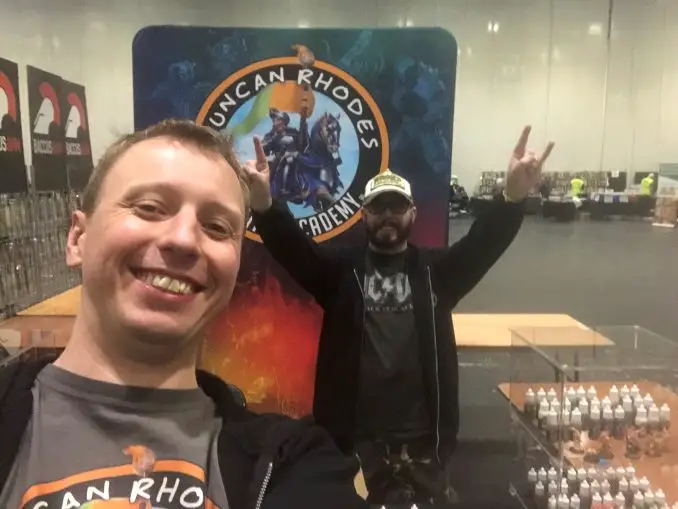
We’ve got it on good authority that when the Two Thin Coats paints were first pitched to you, your willingness to be involved in the project was, to a large degree, dependent on you having full creative control of the paints. Did you insist on having full creative control, and if so, why?
“It is indeed true. The reason is because Roger and I understand that our reputation is an extremely valuable thing. We’ve got one of honest and integrity, it’s fair to say – at least, I think it is! – as whenever we do these painting videos, we’re always trying to tell the truth,” Duncan says.
Being able to put the breaks on the Two Thin Coats paints – should the need arise – was a key part of Duncan’s willingness to work with Trans Atlantis Games. “There are no lies on camera as we want people to be able to replicate what we do. So, when the opportunity came along to do the paints, I was like ‘Sure, but I don’t just want to put our name on someone else’s product to sell it whilst having no hand in what the thing is like.”
“When we were approached by Trans Atlantis Games [about the paints] they actually had a sample set of colours and it was based around the colour wheel,” Duncan says. However, Duncan and Roger were keen to re-focus the first wave of paints instead around supporting beginners in order to help develop a “foundational understanding” of how paints and colours work before moving on to more advanced things from there. Duncan recounts how Bob Watts – Trans Atlantis Games CEO – “practically bit our hand off at this” in his eagerness to get Duncan and Roger more involved in the project. “I don’t know if he expected us to want to be as involved in the project as we were,” Duncan says, “but he was delighted about it and very quickly basically allowed us to create our own thing whilst he handed all the boring stuff, such as the manufacturing of the product. He would basically just take on whatever stuff we approved and would take that forward.”
Duncan pauses for a moment. “Have you ever seen that episode of the Simpsons where Homer finds he’s got a brother who owns a car company, and he gets [Homer] to make the car and it’s awful? In the back of my mind, I was constantly thinking ‘Oh god, what if it ends up like that?'” Duncan goes on to explain how, in his quest to make the paints as good as possible and avoid his Simpsons-induced nightmare, he would constantly go back and forth with the paint chemists, trying out different formulas in order to try and ensure his paints were perfect. “It wasn’t until much later on I found out I’d picked the most expensive combinations of things!” he admits.
“It’s part of the licencing agreement that everything that comes out tiene to be approved by us,” Duncan says – referring to himself and Roger. “I also insist on trying to get as much feedback as possible from all the people at Trans Atlantis and everybody involved around [the paints project] – even my wife plays around with the paints and tells me what she things about things.” This is crucially important to Duncan: “Whilst we get the final say, I know I can be wrong about things so I want everyone to get involved. I think it’s the best way of doing it, and we try and do it in the most honest way we can as well.”
The Wave 1 Kickstarter dropped right before the Covid-19 pandemic – which undoubtedly placed huge burdens on you and the Trans Atlantis Games team. How did you manage the development of your Wave 1 Kickstarter whilst simultaneously battling with the challenges posed by Covid?
“Covid was happening when the Kickstarter began. I think it was around the Delta variant – some time before the Omicoron variant at least, the last three years have been weird, haven’t they? – that everything started. Bob [Watts] has been in the Wargames industry forever, and when he set out the original Kickstarter the plan that he had projected was completely legit. It all made sense and everything was in place for it. As things kept being in flux due to the pandemic, it caused all sorts of issues.”
Duncan explains how just getting to the paint factory to look at the original formulas and make adjustments was made difficult due to social distancing rules. “Unexpected things would just happen all the time,” Duncan says. “The Kickstarter got quite heavily delayed – as, no doubt, anyone who backed it knows – and we kept encountering new obstacles.” Another example Duncan gives is of how quickly the Kickstarter smashed its stretch goals, much to everyone on the team’s surprise.
In the scramble to offer new stretch goals to backers, one of the things added was a foam insert to safely package the paints. “Then the war in Ukraine broke out and Ukraine is where all the stuff needed to create the foam is sourced from. The supply chain completely broke down, but we were committed to delivering this as part of the Kickstarter.” The Trans Atlantis and DRPA teams ended up rethinking loads of their original supply ideas due to the myriad unforeseen circumstances they encountered, all the while many Kickstarter backers were growing discontented with the delays, questioning whether or not the paints were a scam. “That was quite hard to deal with,” Duncan admits, “and whilst it all worked out in the end, I suppose the truth of it is that you don’t know what will happen tomorrow.”
“Luckily now, thanks to everything that happened, we’ve now got processes in place for Wave 2!”
We were big fans of Wave 1. We noticed when testing your paints how consistent their coverage is – perhaps more so than any other paint range we’ve seen. For you, why was this such an important feature to include in your paints?
“Have you ever wanted to paint something with a colour that should just apply, but it won’t?”
Haven’t we all.
“One of the most irritating things I’ve found in the past is wanting to paint a colour scheme but the paints won’t apply properly. It drives me crazy. This is usually due to the particular paint you’re using. Yellows are the obvious ones.”
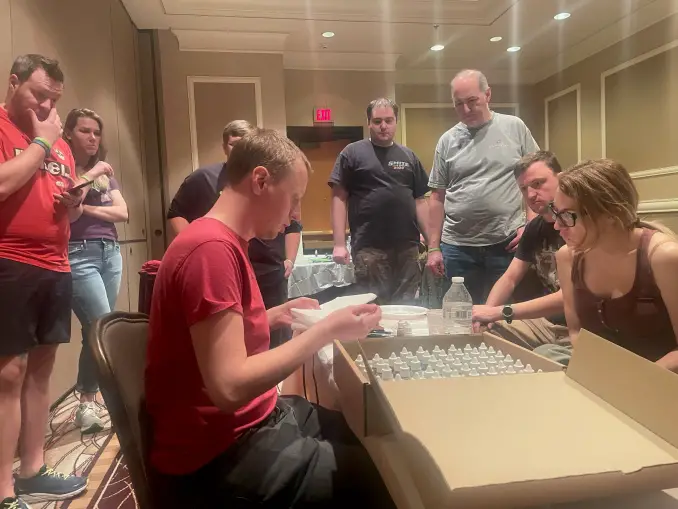
Duncan knew right from the start that particular colours and paints had issues and was determined that these would not be present in any paint range with his name on. “Ones that always get me are emerald green colours,” he says. “I’ve had experience of trying to paint Salamanders Space Marines before and it’s driven me crazy as I just haven’t been able to get the colour to be nice and even.” In order to try and address this – and address particular colours that were obvious culprits – the DRPA and Trans Atlantis teams went back and forth throughout the development trying to ensure these issues were not present in the Two Thin Coats range. “I was, how shall I say it, really petty about it,” Duncan says. “I’d be like ‘I don’t like this one, can we do something about it?’ And the chemists – who, by the way, are absolute geniuses – would take it away, implement my feedback and ultimately make the paint better!”
Duncan explains that Bob Watts was very trusting of what Duncan wanted and never pushed back. Quality was prioritised over everything else – DRPA and Trans Atlantis were out to make the absolute best paints they could, and would not settle for anything less. Duncan explains how each time something new was added to a paint formula, this would throw up new challenges – from certain things making the paint smell bad, to others making the pigment too heavy – and they ultimately settled on a formula with a slightly higher levelling agent than any other, which he believes accounts for the smoothness of the DRPA Two Thin Coats Paints. “It was a lot – and I mean un monton – of back a forth. It made it quite a long process, but it results in the end product always feeling really nice.”
It’s clear from reviewing the Two Thin Coats Triad System that the paints in the range are designed to be easily understood by newcomers to the hobby, and the method of painting you champion is all about utilising simple but well-executed techniques to get an excellent result. Accessibility to the hobby is clearly a big deal for you – why?
“Accessibility to the hobby is huge,” Duncan says without a pause. “This is because I think that if somebody wants to take part in something, it’s a moral duty to help them into it. I don’t mean just by saying it, but also by trying to create a welcome environment. This goes as far as anyone – literally anyone.”
“Everything I’ve been doing in my career, right from the start in retail [with Taller de juegos] all the way through to what I do now, I’ve wanted to help newcomers start. If anyone ever came in [to the shop] and had had a bad experience that put them off it, that would make me feel awful."
The emphasis on the final word in the sentence hangs in the spatial vacuum of the Goole Meet call for a moment.
Duncan glances away from the camera for a moment. “There was one time where we were doing a bank holiday event – a staff versus customers sort of thing – and this young lad came in with his T’au army. It was his first army, he’d painted it really nicely and wanted to have his first game. We were all super busy, and by chance he ended up playing against one of the store veterans who wiped the floor with him. And he just packed up and left. That was it. When I realised this had happened, I was like ‘I should never have let that happen, that’s awful,’ as an experience like that can really put people off.”
Duncan has noticed a similar thing with painting. “People can be embarrassed about their miniatures,” he says. “I’ve always wanted to do what I can to negate that sort of thing, and I think this comes from when I was a kid. I asked a staff member how I did a certain thing [to paint a tank] and the staff member – and I don’t know if he was having a bad day or what – but the way he talked to me made me feel really small and stupid for asking a question. And it’s not a stupid question if you don’t know the answer and it’s not obvious, is it? I basically hate that,” Duncan says.
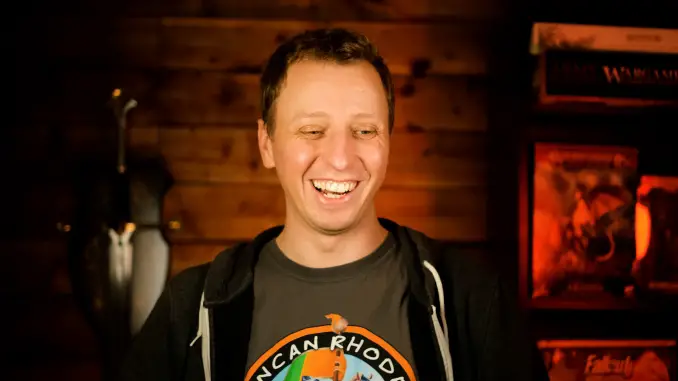
Having revealed his core drive to be a desire to help people into the hobby, Duncan turns his attention to his old company. “It’s why I have such huge respect for Taller de juegos staff,” he says. “Their job is really hard and they are on the frontline of this sort of thing and they have to deal with it all the time – and get little thanks for it.”
“I guess my long, rambling answer is basically: everything I do is to enable people to enjoy their toys more. That’s really what my driving goal is. I don’t care what army you want to do, or what game you want to play, or anything like that; if you look at something like some 40K Orks and think ‘That’s amazing, I’m never going to be able to [paint like] that,’ I want to be there to go ‘Yes you can, this is how you do it, it’s not too difficult,’ and that’s just it – it isn’t too difficult. Once you get a basic understanding of these things, it is quite easy to put it all together.”
“I don’t care about showing off or any of this sort of thing – it’s why I’m not interested in personally entering any competitions or anything like that – I just want people to enjoy their hobby. So, with the paint range, because Bob would let us do this from the ground up, we were able to implement this as a really fundamental part of it. Triads came about because we knew people would think, ‘I want to highlight something, so there has to be some sort of associated colour.'”
Duncan explains that the core thinking of Wave 1 was ultimately about providing people with a solid base that they could paint from, with shadow colours, mid-tones and highlights to better explain how colours on miniature worked. Wave 2 builds further on this, with further highlights and things that work around it in order to ensure people can keep learning and developing their skills.
So, with Wave 2 in mind, what were your personal biggest takeaways from Wave 1 that you wanted to see implemented or changed in Wave 2? What did you learn, and what were you keen to change with the next instalment of TTC paints?
“Wave 2 is a funny beast,” Duncan says. “When [the Two Thin Coats Paint project] was first started, Bob Watts originally approached us and asked us if we would like to do some colours. We asked ‘How many colours?’ and he responded ‘Is 30 enough?'”
Duncan explains how, due to their ideas about painting triads, 30 wasn’t going to cut it. They originally stretched to 48, and then to 60 colours. “When that happened, we we’re like ‘Okay, we’ve got 60 colours to play with and we’ve got the triad system, which give sus a starting point.” DRPA and Trans Atlantis knew they wanted to add more paints and more lines to the range more or less as soon as they made a start picking out colours for Wave 1. “Weirdly, it came out as another 60,” Duncan says, which set them up perfectly for Wave 2.
“We had always thought of it as being this larger set of 120,” Duncan says, “but we had to make do with 60 in the first half. When the first half came out, it did feel a little bit like fighting with one hand behind your back because, for example, there’s only one set of reds. You can use the reds in different ways, but you might want, say, more of a maroon, so there are some obvious gaps there.”
Wave 2 is designed to fill in any gaps in Wave 1. Whilst Wave 1 is all the core, fundamental colours that you need to paint most things, Wave 2 “breathes life into it, and gives you lots of fun options on top of it.”
It was, apparently, also very easy picking the colours for Wave 2. “There are some really cool colours in there,” Duncan says eagerly. “We were able to use the same formulas as we had in the first wave and apply it to the second wave.” All that back and forth with the chemists in Wave 1 paid off big time for the DRPA and Trans Atlantis teams, as they were able to guess which colours might cause them problems and use one of their earlier formulas as a starting point for developing those paints. “It was definitely an easier process doing the second wave,” Duncan says.
We’ve been told that Wave 1’s paints were chosen to try and ensure that around 80% of all models in all systems out there could be painted with these paints alone. So, what was the thought process behind the colours and triads you picked for Wave 2, as well as the new metallics and washes?
“You have to get your primary and secondary colours in your first wave – that’s a given,” Duncan says. “A lot of these things are also controlled by what the most popular stuff is, so that needs to be factored in too. You tengo to cater for that-“
(He’s talking about Space Marine colours, if you haven’t guessed.)
“-and then you need to have black all the way through to white, so that’s a whole bunch more, and you can’t really do that in just one triad. You’ve also got to have a selection of browns in there because so much stuff is just brown. If you’re doing medieval stuff, you need a whole variety of browns, and that gets even more so when you need to start doing horses. There are also all the khakis, which are fantastically neutral colours that you’ve just got to have. You’ve got to have silver, and you’ve got to have gold. Then there’s burgundy, which is such a useful thing as well for more elaborate things like generals and cloaks. Everything is controlled by the consumer’s desire for these things. It’s the same for washes, too.”
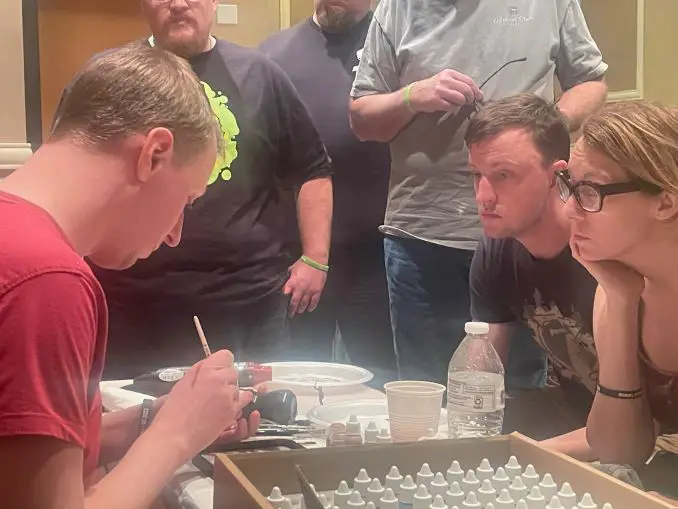
“With Wave 1, there wasn’t much in the way of choice for us,” Duncan says. “Wave 2 is the fun stuff around that. Rather than just having gold and silver, you’ve now got coppers and brass, and a darker silver for more example. Instead of just blue and green, you’ve now got turquoise in there, as well as jade greens and all this sort of stuff.”
Duncan excitedly explains that these are the sorts of colours you bring in for all the fun stuff on your models: “sorcerous spells, power swords, plasma weapons, things like that.”
We’ve noticed that there are a few new types of paints on the Wave 2 Kickstarter – namely those under the “Brights” heading as well as your new “Glaze” paints. These are a bit of a new addition to the paints we saw in Wave 1. So, what was the thinking behind these?
Duncan recounts how throughout the Wave 1 Kickstarter, they were constantly asked if it would be possible for certain sets of colours and different paint types to be added to the range. “When the first Kickstarter happened, people were always like ‘Wow! Can you do estas as well?!’ and so we started making little notes of what people were asking for.”
It turns out, people really missed the old style of Glaze paints that Taller de juegos used to make, so the DRPA and Trans Atlantis teams decided to have a go at making some of these. “We eventually came up with our own formula – they’re similar, but they are a bit different,” Duncan says. “They have a similar function, in that you paint them over things.”
Duncan assures me there are also a number of colours in Wave 2 that were requested by fans of the first wave. “In addition to these, there are also the Brights,” he says. “Now, the Brights were actually Roger’s idea, because he was looking at the colours in the primary and secondary colours we had and felt that none of them really punched. None of them were really súper bright. They had to be the way that they are for given reasons, but can they be more than that?”
Duncan explains how they decided to add a set of primary and secondary colours that could be added on to the end of some of the triads. “When we were with the chemists, we asked if they could make bolder versions of certain colours. It was funny with the red in particular: when you highlight red, you tend to go into either pink or orange, and we were like: ‘Can’t you just go redder?'”
At first, the painting chemists ended up going into oranges and pinks a little more than the team had wanted. “The [chemist we were speaking to] was like ‘Alright, give me a minute,’ and he went off and came back with the reddest red you’ve ever seen. It’s so weird,” Duncan says, “if you look at a normal red and then put this new one next to it, the normal red just looks brown. It’s asi que red it just messes up your perception of what red actually is. It’s really fascinating!”
Again, Duncan is keen to emphasise just how fundamental Roger was to these paints. “He always nags me for painting everything dark, and I don’t think that’s fair, personally.” Duncan pauses. “Hm. Peter would say the same thing, probably.”
Do you anticipate bringing in more types of paints in future Waves?
“Potentially. I guess it’s a ‘watch this space’ type of thing – but we’re always open to feedback, so if there are things that people would like to see, or if anyone has any thoughts on things, they’re always welcome to drop us an email and tell us.”
The Wave 2 Kickstarter has only relatively recently ended. It didn’t net quite as much cash as the Wave 1 Kickstarter did (though there’s no denying it did extremely well). Are you pleased with the response to Wave 2, or did you find yourself having to manage your expectations a little following the unprecedented success of Wave 1?
“So, Wave 1 blew out our expectations. We never expected it to do that much,” Duncan says. “Minutes before it launched, Roger and I were discussing what would happen if the stretch goals didn’t get hit and whether or not that would be embarrassing – and instead it just went nuts. We saw a lot of people saying they were backing it because they believed in us and wanted us to succeed, which was unbelievably humbling. This is what I meant going back to talking about the responsibility of ensuring anything we put our name to has to be as good as we could get it and as good as people expected it to be. There was a lot of pressure in that way with people saying those sorts of things.”
“When it came to Wave 2, we knew it wasn’t going to do quite as much,” Duncan continues. “We fully expected that – but even then, we still didn’t expect it to do as well as it did. When it launched, Roger and I were actually in Vegas right before the Las Vegas Open. We were both wandering around the Paris Casino jetlagged when we got a phone call saying the Kickstarter had launched and that it was already fully funded.” Duncan remembers the overwhelming relief he felt even then. “Again, we were worried about what it was going to do – what if it didn’t get funded? What if the delays from the first Kickstarter meant that nobody liked it at all and it wouldn’t go anywhere? And again, it went crazy – a lot of people taking it as an opportunity to get a set of Wave 1 paints as well on a good deal.”
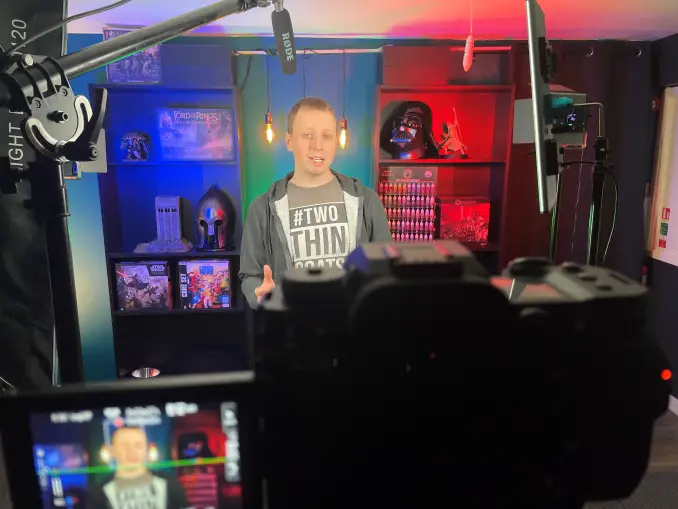
Duncan sits back in his chair. “It really is unreal that people are so willing to support us,” he says, “and that they continue to believe in us and back these things. It’s a surreal experience, it really is, but I just hope it helps people enjoy their painting even more.”
In spite of the position, success, and fame he has reached, Duncan still believes that the heart of the hobby lies in its grassroots stores. “It’s why I have such respect for, for example, Taller de juegos store staff,” he says again. “These people are just passionate about their hobby and want to share it with people – and if you go into your local gaming store, there’ll always be that person there championing a system or similar. I guess if you’re reading this and you know someone like that, make sure you give them a high-five and a handshake from me, alright? Because they certainly deserve it.”
Since leaving Taller de juegos and striking out on your own, how has your approach to delivering painting guides, tips, and tricks changed? Now you have more creative freedom to use whatever products you want (within reason) do you feel your painting style has evolved at all?
“So, things have definitely evolved since then. At Taller de juegos, understandably, you have particular rules and restrictions on what you do. One of the things you have to do is, obviously, only use Taller de juegos products and you have to showcase them in their best light.” Duncan muses that when he was a painting presenter for Warhammer TV, one of the rules he had to follow was that you can’t mix paints. “The reason being [seemed to be] that [Taller de juegos] make these colours, and if you’re mixing them it suggests they’ve missed something in the range.” The other reason being, of course, the colours needed to match what was in the range. “If I was painting some Thousand Sons and I mixed the blue for their armour, how is everybody going to get that exact same tone, and how am I going to get that exact same tone when it comes to the next unit?”
This means, of course, that since leaving Taller de juegos, Duncan has been able to shake off these restraints and try all sorts of new things in his content. “I started incorporating some more advanced things into videos. A lot of the videos are very much core stuff that follow [the same principles as always]. So, if I’m doing a Flames of War miniature, like a tank, I’ll do the research to work out what the correct colour – or as close as I can get to the correct colour – would be, and then follow some clear steps with no mixing to show how to get that effect. It’s very similar to what I used to do at Taller de juegos. "
“There are, however, now more advanced things we can do. For example, we’ve got a video coming out this week (week commencing 10th April) that is Supreme Grand Master Azrael – does anyone else think it’s funny that’s he’s going to have to give up being Supreme Grand Master in the next five minutes as the Lion is going to come knocking and pinch his crown – and this is an opportunity where I can say ‘So, in this video we’re going to show you some more advanced techniques.’ So, we can do mixing and blending – we’ve done loads of wet blending to get more elaborate highlights – that we wouldn’t have done back at Taller de juegos. It also means we can use things like wet palettes, for example, because of course Taller de juegos don’t make one.”
We both note how interesting it is, then, that in the Citadel Masterclass videos available on Warhammer+, the presenters hacer in fact use both mixing of paints y wet palettes. This took us both by surprise – Duncan even going as far to say that he would have bet money that they would not have used wet palettes.
“I guess the answer is yes to both. We still do the solid, core, dependable ‘how to paint a unit’-style stuff, but we’re also able to explore more elaborate stuff. We did a non-metallic metals video, for example.”
Given that your career is based entirely around the miniatures painting hobby, how much of your free time (if you have any free time given how hard you’re working on everything at the moment!) do you dedicate to painting miniatures, or do you have any other hobbies and interest we may not know about?
“Oh, plenty,” Duncan says. “I do still paint miniatures [in my free time], but I don’t do it as much as I used to. Roger always used to make fun of me being weird this way: I’d paint in the evening, come into work the next day, paint before the day started, paint for a living, paint at lunchtime, then after work I’d go home and paint some more. Running your own business, though, Roger and I have to do work at all times of the day. You don’t really get the free time so much anymore – and often, you’re just tired and don’t necessarily want to do it.”
Duncan explains he tends to get most motivated to paint things now if he’s doing it for a reason – usually for a game he wants to play. “All this Flames of War stuff I did was done [with the goal] of playing once the world went back to normal [post-Covid]. All of us were going to meet up and play this game for the first time. Now, my wife spontaneously decided to start painting miniatures towards the end of [2022]. She loves Lord of the Rings, so it was inevitable that these two things would cross over, so she bought a Mordor set and I thought: ‘Right, well I supposed I had better paint some Lord of the Rings stuff to fight her!”
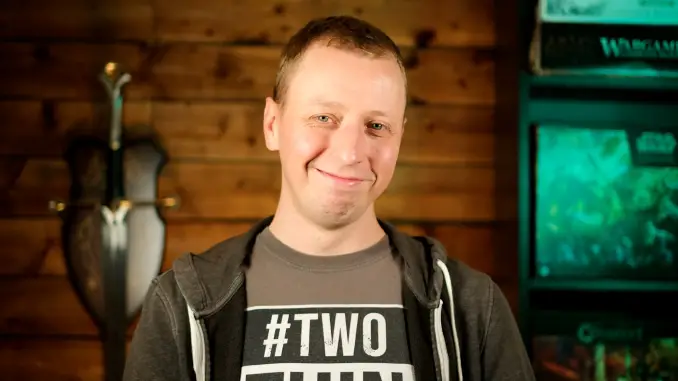
Duncan glances past his computer. “I’ve got a box of Great Eagles from the Hobbit here that my wife got me as a present a few weeks back, and I had a game of [Adeptus] Titanicus with some mates I hadn’t seen since before Lockdown and it reminded me that I do really think this is Taller de juegos’s best game. I love it. I was like: ‘Man, I want to do some Titans, I want to finally paint the legion I always wanted to paint.'”
Duncan muses on how he’s never actually painted the Titan legion he’s ever wanted to paint – for various roundabout reasons, he always ended up painting something else. “I’m finalmente going to do Astorum,” he says with conviction. “That’s the one I want to do – blue and yellow!”
Beyond painting, Duncan is also into Napoleonic Re-enactment. “If anyone wants to meet me, turn up to a re-enactment event and I may well be there,” he says. “I am on the French side, I’m in two groups – the 45th and the 21st. If anyone is ever interested in trying this, by the way, get in touch with the 21st. They’re very good at getting people into it and you can borrow equipment and have a go. It’s loads of fun and very silly.”
Off the back of that, what are you currently painting at the moment?
“I’m currently doing some Rohan,” Duncan says eagerly. “I painted a bunch of riders, I’ve got some Rohan on foot – it’s actually quite cool painting them, because I can remember them coming out back in, what was it, 2002? 2003? And they haven’t changed since then. These models are so old! I’ve also got an Eomer model I need to paint, so I’m working on those. Like I say, I’ve also got Titans I’ve been dragged towards.”
What I had thought would be a quickfire, straightforward question turned out to be the single most revealing and insightful response Duncan gave during our chat. Whilst he’s a veritable font of knowledge, good humour, and humility, this question brings out the real man. He dives deep into his love of the hobby, and begins explaining how he spends his lunch breaks at work basing some of his old, unfinished Titanicus models under Roger’s watchful eye.
Duncan’s love of miniatures and tabletop gaming is – and I say this with complete sincerity – totally unmatched by anyone else I have ever met. After having explained to me that in his free time Duncan tends to paint for games he wants to play, we slipped into a discussion about some games we’ve played recently.
I didn’t think anyone played Adeptus Titanicus, but the way Duncan talks about it you’d think it was the greatest game ever made – and you know what, based off this interaction alone I find myself agreeing with him. His passion for gaming and the experiences it brings has us both in stitches as he recounts a game he’s played in which his Warlord Titan totally defied his wishes and kept wandering towards an enemy Reaver Titan, offloading blasts of its Volcano Cannons in direct defiance of his wishes. His enthusiasm is infectious, and I suddenly find myself desperate to play a game of Titanicus. I counter with a story from playtesting Frosthaven – how drawing cards in secret from the other players can lead to disastrous – albeit very amusing – consequences.
“I’m not a competitive gamer in any way,” Duncan says, “so anything silly – I’m there.”
Beyond paints, can we expect to see any other hobby products from you in the future due to your partnership with Trans Atlantis Games? Perhaps a Duncan Rhodes-themed miniatures wargame?
“Watch this space,” Duncan says. “We’ve got a few plans for some other products and things, again all will stick to the stubborn high quality that Roger and I insist upon. As for a game, maybe! I mean, we made some miniatures, so who knows? Watch this space.”
Beyond your work with Trans Atlantis Games, what else can we expect to see from you in the near future?
“Ah! So, on our website, we are going to be adding some new stuff. Recently, we were able to get our own premises. So, we now have a adecuado studio and office. It’s actually really cool, it’s an old police station so it’s got a gun locker and everything in it like that. In there, we have room to have a second studio that we can do other stuff in. You can expect to see a new style of content I don’t think many people will be expecting, still, you know, genuine ‘this is how you do these things’ sort of stuff, but [the new space] allows us to do all sorts of new and interesting things.”
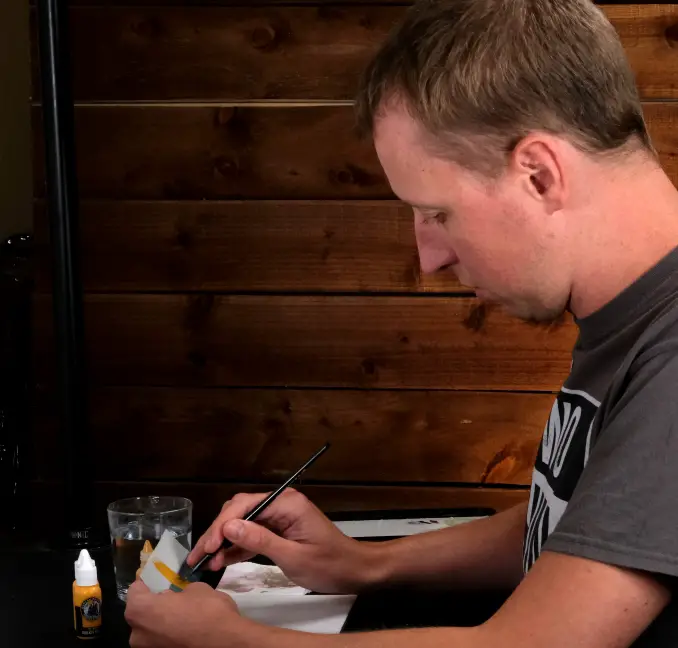
In addition to this, Duncan explains that the DRPA will be adding some more “core-style stuff onto their website”. “We feel there are a few things missing from there at the moment, and we want to plug those gaps.”
“We’re also going to have some interesting, community-style stuff on there as well.” Duncan hints that this is, again, intended to help people improve their painting and whilst it isn’t quite on a “one-to-one” level, it’s getting that way.
Where can people next see you in person? Are you attending any events you’d like people to know about?
“I’m going to be at Salute in about two weeks time.” People can expect to see painting demos and the other stuff style of stuff the DRPA is so well-known for. Shortly after, Duncan will be jetting off to GAMA Expo in Reno with Asmodee as the Two Thin Coats paints are about to go on sale in the US.
I Imagine you always get asked about painting, so to finish off the review I’ve prepared some quick-fire questions so people can get to know the man beneath his two thin coats. Entonces…
- What’s your favourite brand of tea? Clipper. “It’s like Yorkshire Tea but a smaller business.”
- What was the last album you bought or listened to? “Oh, good lord,” Duncan groans. “It would be the Final Fantasy 7 remake soundtrack. I like soundtracks. I’m not really a bands sort of person – you’ll have to go to Roger for that!
- What are you having for dinner this evening? “Oh, I think it’s Mrs. Rhodes’ fajitas – and she’s a fabulous cook!”
- Dogs or cats? “Oh, dogs. We’re actually getting a dog soon – in two weeks! We’re getting a puppy; he’s a mix of so many different things, bless him. He’s got, I think, four different breeds going on. Beagle, Spaniel, and Collie are three of them – I’m so bad with dog breeds, I can’t remember the other. He’s adorable, and he’s going to be called Spot.”
We conclude the interview at a couple of moments after 5PM, and after signing off I realise that what had started as a fairly terrible day involving a near-collision and subsequent near-breakdown with my car had been singlehandedly turned around by a chat with Duncan. The rumours that he is, in fact, the nicest man in the hobby are all 100% true, and I’m completely inspired to get hobbying. I dismiss making a start writing up this article to go and grab some paints and brushes and lay into the closest model to me.
Two Thin Coats Wave 2: An Interview with Duncan Rhodes and Peter Buxton – Final Thoughts
It’s clear that the future for Two Thin Coats is bright. In fact, some of it is asi que bright that it makes regular red colours look brown.
Trans Atlantis Games and Duncan have just concluded their Wave 2 Kickstarter – bringing another 60 colours to the table, and some more products into the fold. Whilst this hasn’t bastante reached the insane heights of the Wave 1 Kickstarter, Wave 2 has still smashed its funding target by over 700%, and has raised an eye-watering $750,000 (as of 8th February 2023). Don’t worry if you missed it, you can still late pledge!
I have to say a huge thanks to both Peter and Duncan for taking the time to sit down and talk to us. Their collective insights into the process – as well as their takes on the hobby itself – were both fascinating and inspiring. We can’t wait to see what comes next for you both!
Take a look at our review of Wave 1 for more info on how these paints perform.
Tenga en cuenta: This site uses affiliate links. Our Affiliate Partners are shown below
(Affiliate links will result in compensation to the site on qualifying purchases)
Haga clic en este enlace y compre sus cosas de hobby en Element Games para el Reino Unido y Europa para admitir FauxHammer.com - Use el código "FAUX2768"En la caja para obtener puntos de recompensa doble.
Nuestros afiliados / tiendas de hobby
- REINO UNIDO: Juegos de elementos, El puesto avanzado, Juegos Wayland, Lancer poderoso, Juego de duendes, Forbidden Planet, Suministros para escenarios de modelos, eBay, Amazonas
- EE. UU. / Canadá: MTechCave, GameKastle, eBay (EE. UU.), eBay (CA), Amazonas
- Alemania: Taschengelddieb
- Europa: eBay (DE), eBay (FR), eBay (ES), eBay (IT), Amazonas
- Australia: eBay, Amazonas
- Global: Juegos de RedGrass, Colores de guerra
- Impresoras 3D: Congelado 3D, Elegoo, Anycubic
FauxHammer - Último video en YouTube
What did you think of this article? Please let us know in the comments.
Si le gusta lo que estamos haciendo aquí, realmente podría ayudar a fomentar más contenido con un recurso compartido en cualquier plataforma de redes sociales.
Haga clic en los enlaces para compartir en la parte inferior de esta pantalla (o en la izquierda para computadoras y tabletas).
¿Quieres mantenerte actualizado con el blog? Puede suscribirse en la barra lateral para RSS o por correo electrónico a continuación
(La barra lateral está debajo del artículo sobre dispositivos móviles)





